Unique (Dictionary)
- There is no error handling i.e. it is assumed that the range is a one-column range and that there are no error or empty values. This could be easily implemented, but you wanted it short.
1D - Function
Function getUniqueColumn1D(ColumnRange As Range)
Dim Data As Variant
Data = ColumnRange.Resize(, 1).Value
With CreateObject("Scripting.Dictionary")
Dim i As Long
For i = 1 To UBound(Data)
.Item(Data(i, 1)) = Empty
Next
ReDim Data(1 To .Count)
i = 0
Dim key As Variant
For Each key In .Keys
i = i + 1
Data(i) = key
Next key
End With
getUniqueColumn1D = Data
End Function
Sub test1D()
Dim rng As Range
Set rng = Range("C3:C30")
Dim Data As Variant
Data = getUniqueColumn1D(rng)
Debug.Print Join(Data, vbLf)
End Sub
2D - Function
Function getUniqueColumn(ColumnRange As Range)
Dim Data As Variant
Data = ColumnRange.Resize(, 1).Value
With CreateObject("Scripting.Dictionary")
Dim i As Long
For i = 1 To UBound(Data)
.Item(Data(i, 1)) = Empty
Next
ReDim Data(1 To .Count, 1 To 1)
i = 0
Dim key As Variant
For Each key In .Keys
i = i + 1
Data(i, 1) = key
Next key
End With
getUniqueColumn = Data
End Function
Sub TESTgetUniqueColumn()
Dim rng As Range
Set rng = Range("C3:C30")
Dim Data As Variant
Data = getUniqueColumn(rng)
' e.g.
Dim i As Long
For i = 1 To UBound(Data)
Debug.Print Data(i, 1)
Next i
' or:
Range("A1").Resize(UBound(Data, 1), UBound(Data, 2)).Value = Data
End Sub
2D - Sub
Sub getUniqueColumnSub()
Dim Data As Variant
Data = Range("C3:C30")
With CreateObject("Scripting.Dictionary")
Dim i As Long
For i = 1 To UBound(Data)
.Item(Data(i, 1)) = Empty
Next
ReDim Data(1 To .Count, 1 To 1)
i = 0
Dim key As Variant
For Each key In .Keys
i = i + 1
Data(i, 1) = key
Next key
End With
' e.g.
For i = 1 To UBound(Data)
Debug.Print Data(i, 1)
Next i
' or:
Range("A1").Resize(UBound(Data, 1), UBound(Data, 2)).Value = Data
End Sub
